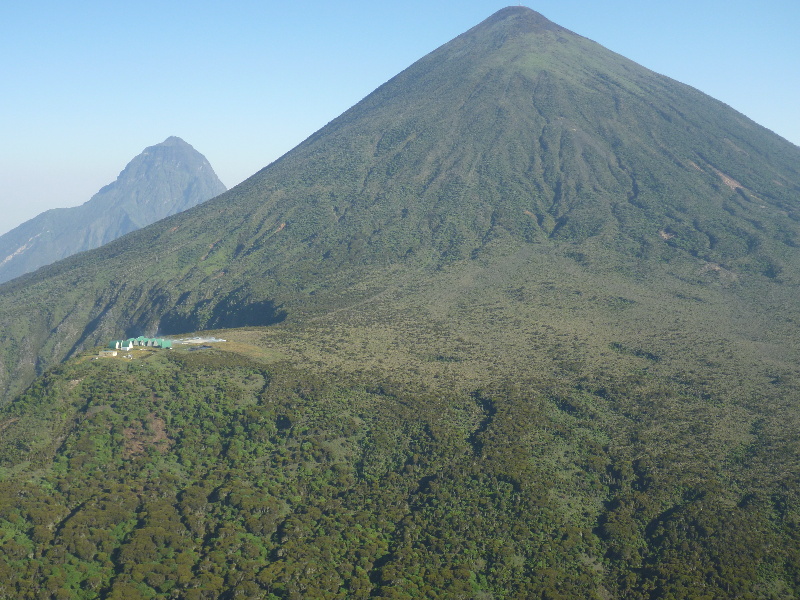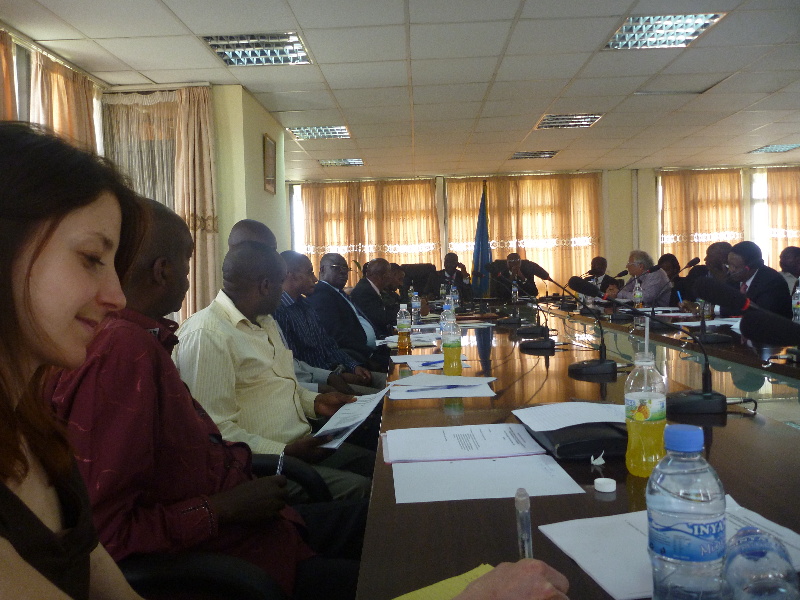PAOC Spotlights
A Woman, a Mountain, a Quest to Map Climate Change
 On a mountaintop in Rwanda, Katherine Potter is helping to put Africa on the climate change grid. She is Katherine Potter PhD ’11, the principal investigator for the new Rwanda Climate Observatory. Working in the same area where iconic zoologist Dian Fossey studied mountain gorillas a half-century ago, Potter works just as passionately towards her goal: to empower Rwandans in becoming part of climate change research and to get Africa on the climate-change grid.
On a mountaintop in Rwanda, Katherine Potter is helping to put Africa on the climate change grid. She is Katherine Potter PhD ’11, the principal investigator for the new Rwanda Climate Observatory. Working in the same area where iconic zoologist Dian Fossey studied mountain gorillas a half-century ago, Potter works just as passionately towards her goal: to empower Rwandans in becoming part of climate change research and to get Africa on the climate-change grid.
If Potter is successful, the observatory atop Mt. Karisimbi will join the Advanced Global Atmospheric Gases Experiment (AGAGE), a worldwide program funded in part by NASA and NOAA that captures climate data.
AGAGE began in 1978 and now includes eight observatories around the world that record air pollution and greenhouse gas emissions. It is a leading source of data for measuring progress against the 1987 Montreal Protocol and 1997 Kyoto Protocol benchmarks for carbon emissions.
Until now, Africa has not had an observatory feeding into AGAGE’s experiment. Covering a fifth of the world’s land mass, this is no small piece of lost data.

Potter hopes to fix that. Working for MIT’s Center for Global Change Science, Potter is training future Rwandan scientists, technicians, and academics to collaborate in the world’s efforts to monitor climate change.
Mt. Karisimbi is a perfect place for the observatory, says Potter, who blogs about her progress. “At 4,500 meters, the air reaching the station will come from a large area, getting info from much of Africa and the surrounding oceans,” she says. “Also, it shares a border with Congo and is in the same protected area that continues into Uganda. So this is unifying the East African community in doing climate research.”
Potter’s work is a result of a conversation Rwandan president Paul Kagame began with then president Susan Hockfield in 2008. Kagame was on campus for the Compton Lecture. CGCS director Ronald Prinn ScD ’71 and geophysics professor Maria Zuber have led MIT’s efforts to develop the project since. The station’s work begins on Mt. Karisimbi.
The project has inspired other alums, like Jonathan Goldstein ’83. “My wife Kaia Miller Goldstein and I have worked with both the Rwandan and MIT leadership,” Goldstein says. “It has been exciting to see them collaborate on this worthy project. We were thrilled to meet [Potter] while in Rwanda recently. She is a real star.”
“I think the real joy for those involved comes from the cultural collaboration, where MIT scientists can really make a difference in the world and the Rwandan people can show the world that they are rapidly advancing as a society,” says Goldstein.
MIT is one of ten universities that participate in AGAGE, a venture jointly funded by British, American, and Australian government agencies. AGAGE instruments around the world measure and report on the atmospheric levels of 33 compounds.
Potter is collaborating with the Ministry of Education in Rwanda, which is recruiting top academics and analysts from within its borders to participate. The Rwandan government is also planning to construct an €18-million cable car up Karisimbi, in the hopes that the station becomes a tourist destination, too. Potter estimates that the observatory will be complete and staffed by Rwandan scientists in the next three or four years.
This article by Joe McGonegal appeared in A Slice of MIT on June 12, 2013.
Links
Kat is a research scientist attached to the Center for Global Change Science. Her PhD research was on N2O isotopic measurements in tropospheric air working with advisors Ron Prinn and Shuhei Ono. Her paper Fully automated, high‐precision instrumentation for the isotopic analysis of tropospheric N2O using continuous flow isotope ratio mass spectrometry co-authored with Prinn and Ono is published this month in the journal Rapid Communications in Mass Spectrometry.